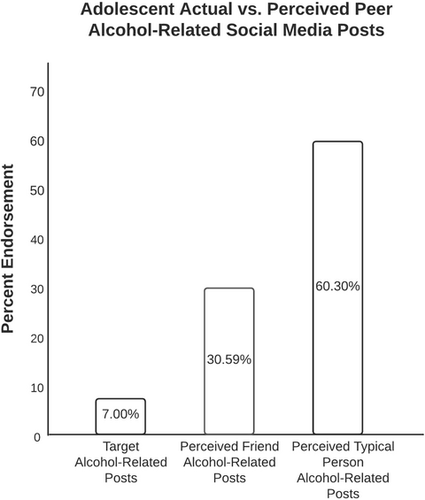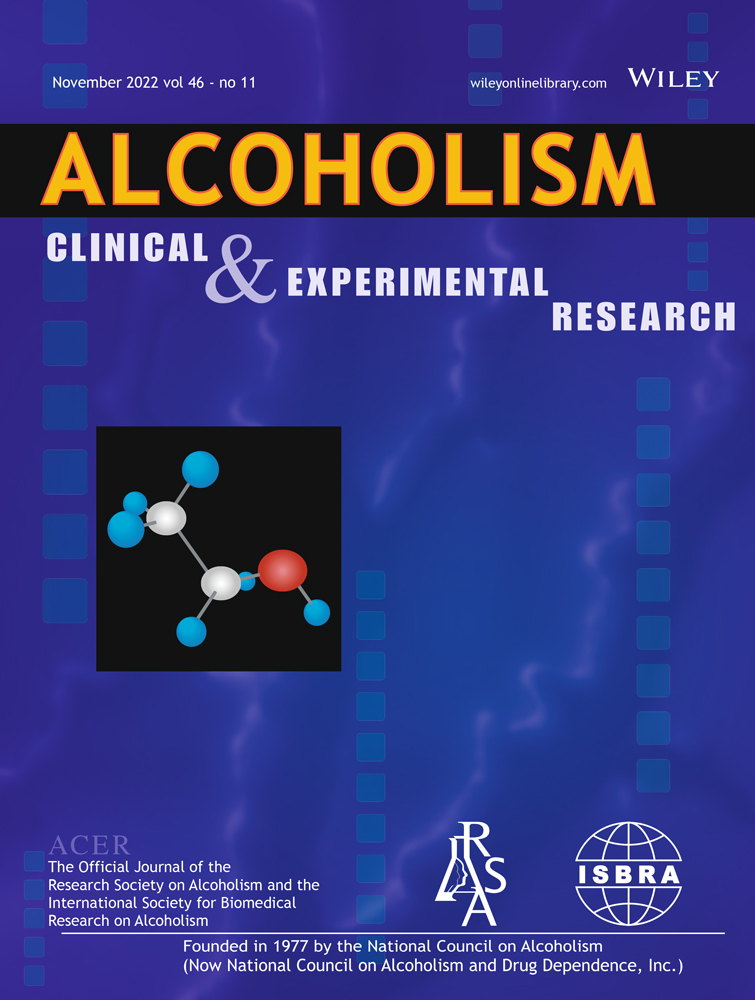Adolescent (mis)perceptions of peer alcohol posts on social media: Prospective associations with alcohol attitudes and use
Abstract
Background
Social media is a central context in which teens interact with their peers, creating opportunities for them to view, post, and engage with alcohol content. Because adolescent peer interactions largely occur on social media, perceptions of peer alcohol content posting may act as potent risk factors for adolescent alcohol use. Accordingly, the preregistered aims of this study were to (1) compare perceived friend, typical person, and an adolescent's own posting of alcohol content to social media and (2) examine how these perceptions prospectively relate to alcohol willingness, expectancies, and use after accounting for offline perceived peer alcohol use.
Methods
This longitudinal study included 435 adolescents (Mage = 16.91) in 11th (48%) and 12th grade (52%). Participants completed measures of alcohol content social media posts, perceived peer alcohol use, willingness to drink alcohol, alcohol expectancies, and alcohol use at two time points, 3 months apart.
Results
Consistent with preregistered hypotheses, adolescents reported that 60.3% of the typical person their age and 30.6% of their friends post alcohol content on social media. By contrast, only 7% of participants reported that they themselves posted such content to social media. After accounting for offline perceived peer drinking norms, neither perceived friend nor typical person alcohol content social media posts were prospectively associated with willingness to drink or positive or negative alcohol expectancies. Perceived friend alcohol content posts were prospectively positively associated with past 30-day alcohol consumption even after controlling for offline perceived peer drinking norms.
Conclusions
Adolescents misperceived the frequency of alcohol-related posting to social media among their peers, and perceptions of friend alcohol content posts prospectively predicted alcohol use. Given the results from the current study and the ubiquity of social media among adolescents, prevention efforts may benefit from addressing misperceptions of alcohol-related posting to social media.
Graphical Abstract
Although only 7% of adolescents in this longitudinal community sample reported that they posted alcohol-related content to social media, they reported that 60.3% of the typical person their age and 30.6% of their friends post alcohol content to social media. Perceived friend alcohol content posts prospectively predicted past 30-day alcohol consumption. Findings highlight that even low-risk youth may benefit from prevention interventions geared towards addressing exposure to alcohol-related content on social media.
CONFLICT OF INTEREST
The authors declare no conflicts of interest.





